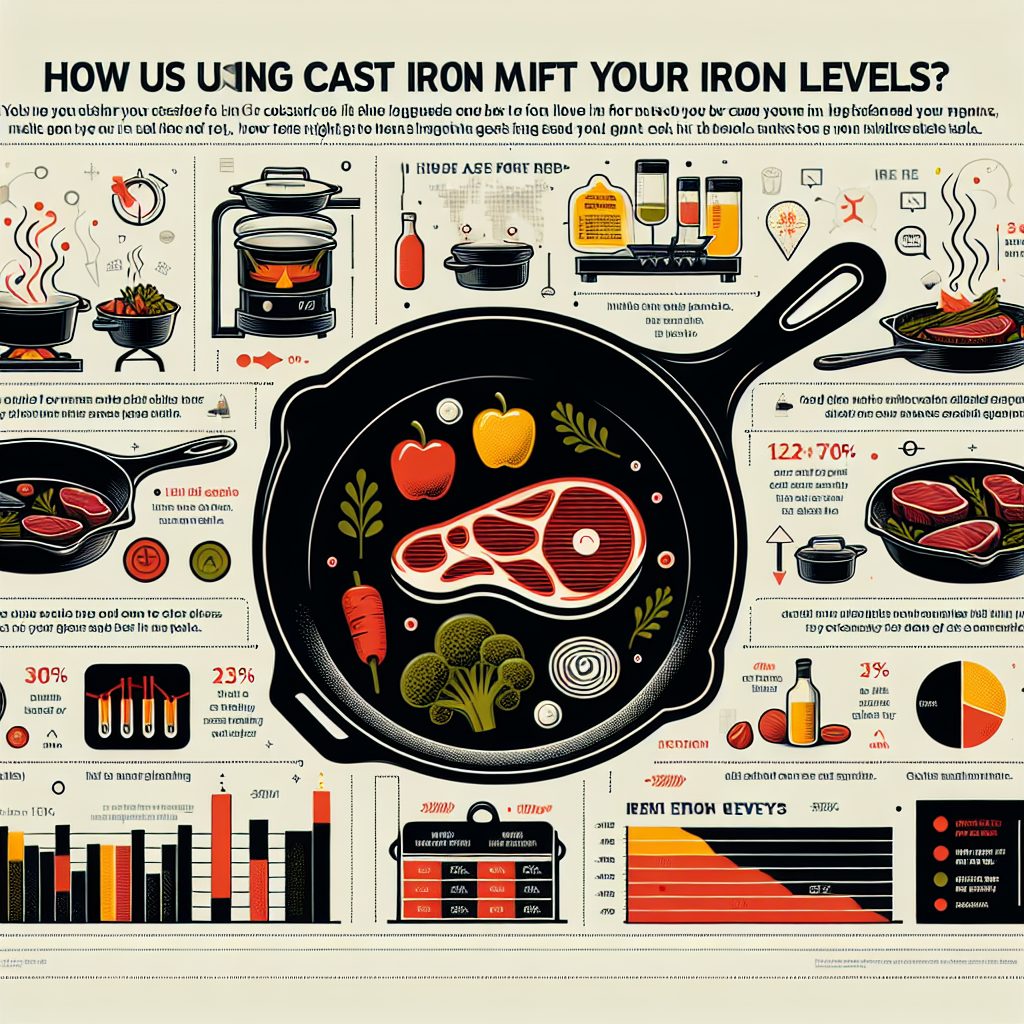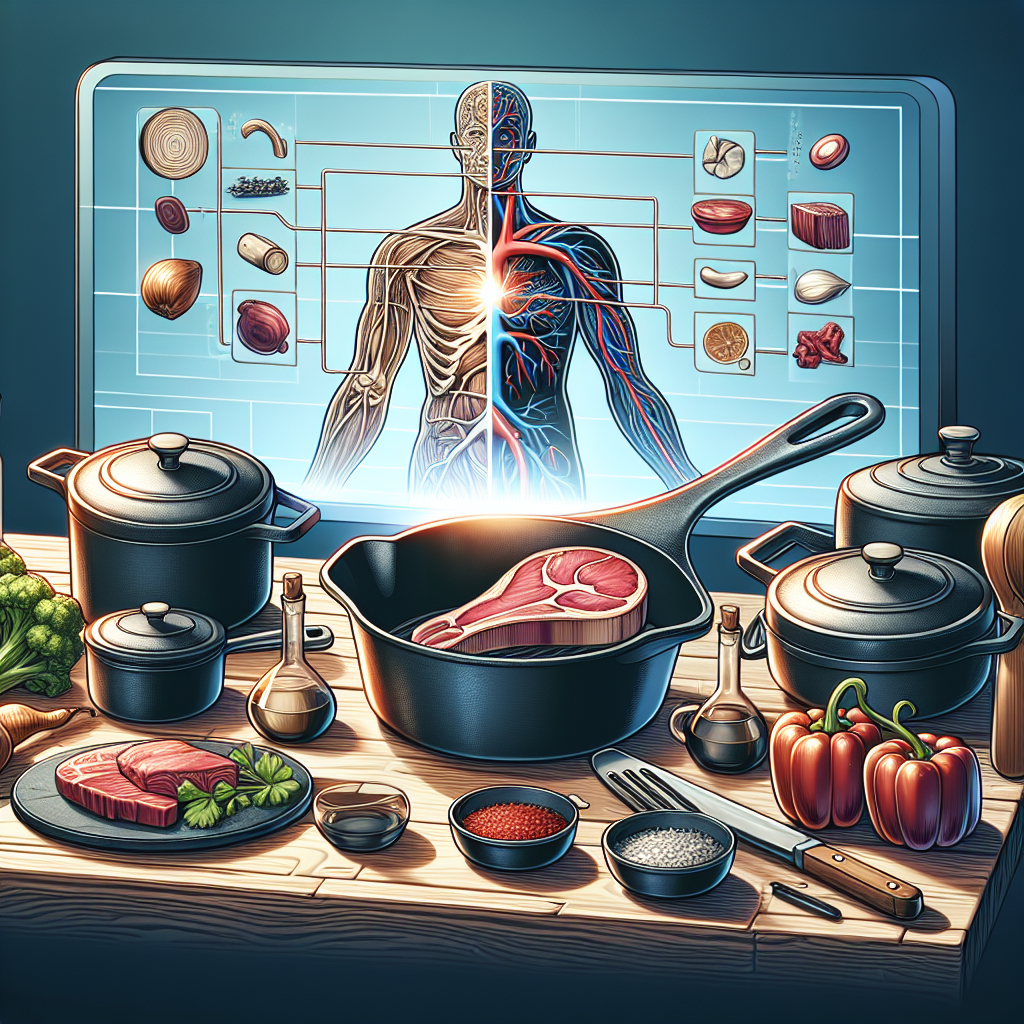Why Cast Iron Cookware Might Affect Your Iron Levels

Discover how Cast Iron Cookware might affect your Iron Levels! Learn more about the potential health implications and make informed decisions about your kitchenware. Visit My Vibrant Vitality now for more information.
Understanding the Impact of Cast Iron Cookware on Your Iron Levels
Cast iron cookware has been a staple in kitchens for centuries, prized for its durability, heat retention, and natural non-stick properties. However, beyond these practical benefits, cast iron cookware might also have an impact on your health, specifically your iron levels. This is because the iron used in the construction of these pots and pans can leach into the food cooked in them, potentially increasing your dietary intake of this essential mineral.
Iron is a vital nutrient that our bodies need to function properly. It plays a crucial role in the production of red blood cells, which carry oxygen from our lungs to the rest of our body. Without sufficient iron, our bodies can’t produce enough healthy oxygen-carrying red blood cells, leading to iron deficiency anemia. Symptoms of this condition include fatigue, weakness, and a decreased ability to concentrate.
On the other hand, too much iron can also be harmful. Iron overload, or hemochromatosis, is a condition that occurs when too much iron builds up in the body. This can lead to serious health problems such as liver disease, heart problems, and diabetes. Therefore, maintaining a balance is key when it comes to iron intake.
Now, let’s delve into how cooking with cast iron might affect your iron levels. When you cook acidic foods, like tomatoes or vinegar-based sauces, in cast iron cookware, the food can absorb iron from the pan. The longer the food is in contact with the surface of the pan, the more iron it can potentially absorb. This can be beneficial for individuals who are iron deficient, as it can provide an additional source of dietary iron.
However, the amount of iron that leaches into food from cast iron cookware can vary widely, depending on several factors. These include the age of the cookware, the acidity and moisture content of the food, and the cooking time and temperature. Newer cast iron pans tend to leach more iron than older, well-seasoned ones. Acidic and moist foods absorb more iron than non-acidic and dry ones. And the longer the food is cooked and the higher the temperature, the more iron is absorbed.
While the iron contribution from cast iron cookware can be significant, it’s important to note that it’s not a reliable source of dietary iron. The variability in iron leaching means that you can’t count on getting a specific amount of iron from your cast iron pan. Moreover, the form of iron that leaches into food from cast iron cookware is non-heme iron, which is not as easily absorbed by the body as the heme iron found in meat and fish.
In conclusion, while cast iron cookware can contribute to your dietary iron intake, it’s not a consistent or reliable source. If you’re concerned about your iron levels, it’s best to focus on consuming a balanced diet rich in iron-rich foods, and to consult with a healthcare professional. They can provide guidance based on your individual needs and circumstances, and can recommend supplements if necessary. So, while you might enjoy the culinary benefits of your cast iron skillet, don’t rely on it as your primary source of dietary iron.
The Connection Between Cast Iron Pots and Pans and Iron Intake

Cast iron cookware has been a staple in kitchens for centuries, renowned for its durability, heat retention, and natural non-stick properties. However, beyond these practical benefits, cast iron pots and pans may also have an impact on your health, specifically your iron levels.
Iron is an essential mineral that our bodies need to function properly. It plays a crucial role in the production of red blood cells, which carry oxygen from our lungs to the rest of our bodies. Without sufficient iron, our bodies can’t produce enough healthy oxygen-carrying red blood cells, leading to iron deficiency anemia. This condition can cause fatigue, weakness, and a variety of other symptoms.
Now, you might be wondering, what does this have to do with cast iron cookware? Interestingly, cooking in cast iron pots and pans can actually increase the iron content of your food. This is particularly true when you’re cooking acidic foods, such as tomato sauce or lemon juice, which can leach iron from the cookware into the food.
This phenomenon was confirmed by a study published in the Journal of the American Dietetic Association, which found that the iron content of foods significantly increased when they were cooked in cast iron cookware. For instance, the iron content of apple sauce increased by 91% and that of spaghetti sauce by 2,109%.
However, while this might sound like a great way to boost your iron intake, it’s important to note that the amount of iron leached can vary widely depending on several factors. These include the age of the cookware, the duration of cooking, the type of food, and the specific cooking method.
Moreover, not all of the iron that’s leached into food from cast iron cookware is necessarily absorbed by our bodies. The type of iron found in cast iron pots and pans is non-heme iron, which is less easily absorbed by our bodies than the heme iron found in animal products.
That being said, for individuals who are iron deficient or at risk of iron deficiency, such as vegetarians or those with certain medical conditions, cooking with cast iron could potentially be a beneficial way to increase their iron intake.
On the flip side, for individuals with conditions that cause them to absorb too much iron, such as hemochromatosis, cooking with cast iron could potentially exacerbate their condition. Therefore, it’s always a good idea to discuss any changes in your diet or cooking methods with your healthcare provider.
In conclusion, while cooking with cast iron cookware can increase the iron content of your food, the impact on your iron levels will depend on a variety of factors. It’s not a one-size-fits-all solution, and it’s certainly not a substitute for a balanced diet rich in iron-rich foods or iron supplements if they’re recommended by your healthcare provider.
However, if you enjoy cooking with cast iron for its many other benefits, you can rest assured knowing that you might also be giving your iron levels a slight boost in the process. Just remember to keep an eye on your iron levels and consult with your healthcare provider if you have any concerns.
How Cooking with Cast Iron Can Influence Your Body’s Iron Content
Cast iron cookware has been a staple in kitchens for centuries, renowned for its durability, heat retention, and natural non-stick properties. However, beyond these practical benefits, there’s another aspect of cast iron cookware that often goes unnoticed: its potential impact on your body’s iron levels.
Iron is an essential mineral that our bodies need to function properly. It plays a crucial role in the production of red blood cells, which carry oxygen from our lungs to the rest of our bodies. Without sufficient iron, our bodies can’t produce enough healthy oxygen-carrying red blood cells, leading to iron deficiency anemia. This condition can cause fatigue, weakness, and a variety of other health problems.
Now, you might be wondering, what does this have to do with cast iron cookware? The answer lies in the elemental composition of the cookware itself. Cast iron pans are, as the name suggests, made primarily of iron. When you cook food in a cast iron skillet, some of the iron from the pan can leach into the food, especially if the food is acidic or cooked for a long time. This process can potentially increase the iron content of the food, and subsequently, your iron intake.
However, the amount of iron that leaches into food from cast iron cookware can vary widely. Factors such as the age of the pan, the acidity of the food, and the length of cooking time can all influence the amount of iron transferred. For instance, newer pans tend to leach more iron than older, well-seasoned ones. Similarly, acidic foods like tomatoes and citrus fruits can pull more iron from the pan than non-acidic foods.
While this might sound concerning, it’s important to note that cooking with cast iron is not a reliable way to significantly boost your iron levels. The amount of iron that leaches into food is generally quite small, and it’s not clear how much of this iron is actually absorbed by the body. Moreover, too much iron can be harmful, leading to a condition called iron overload, which can damage organs like the heart and liver. Therefore, while cooking with cast iron can contribute to your iron intake, it should not be relied upon as a primary source of dietary iron.
Instead, if you’re concerned about your iron levels, it’s best to focus on consuming a balanced diet rich in iron-rich foods. Foods like red meat, poultry, beans, and fortified cereals are excellent sources of iron. If you’re vegetarian or vegan, you can get iron from plant-based foods like lentils, spinach, and tofu. Additionally, pairing these foods with a source of vitamin C can help increase iron absorption.
In conclusion, while cooking with cast iron cookware can potentially increase your iron intake, the impact is likely to be minimal and highly variable. It’s a fascinating aspect of this traditional cookware, but not a reliable or significant source of dietary iron. As always, a balanced diet is the best way to ensure you’re getting the nutrients your body needs. So, the next time you whip out your cast iron skillet, enjoy the culinary benefits it offers, but remember that it’s your diet that plays the most significant role in maintaining healthy iron levels.